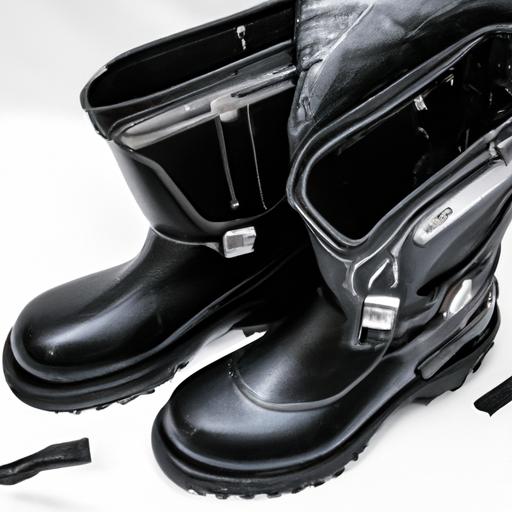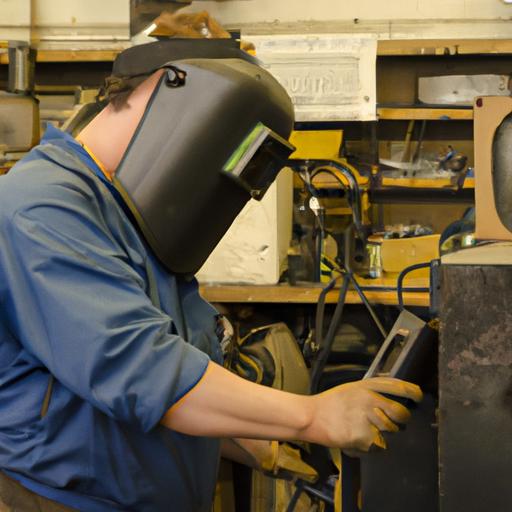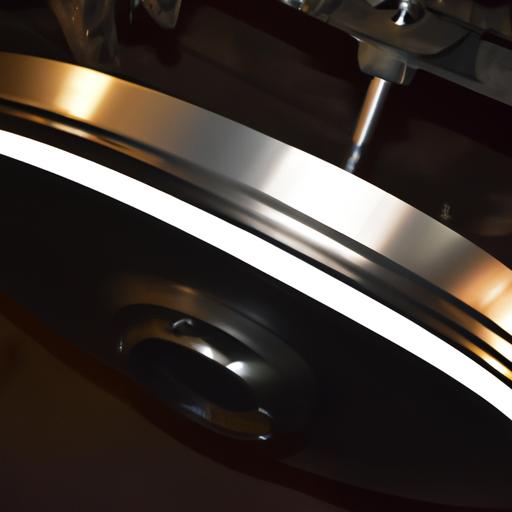Miller Multimatic 215 Problems: Unveiling the Solutions You Need
Introduction
Are you a welding enthusiast or professional seeking a reliable and versatile welding machine? Look no further than the Miller Multimatic 215! This cutting-edge welding equipment has gained significant popularity in recent years, offering convenience and efficiency for a wide range of welding projects. However, like any mechanical device, the Miller Multimatic 215 is not immune to potential problems that may arise during its operation. In this article, we will explore common problems encountered by users of the Miller Multimatic 215 and provide practical solutions to address these issues effectively.
Overview of the Miller Multimatic 215
Before we delve into the prevalent problems, let’s take a closer look at what makes the Miller Multimatic 215 a sought-after welding machine. This compact and portable device seamlessly combines MIG, TIG, and Stick welding capabilities, allowing you to tackle various welding applications with ease. Its user-friendly interface and intuitive controls make it suitable for both beginners and experienced welders, ensuring a smooth welding experience.
Importance of Addressing Potential Problems
While the Miller Multimatic 215 boasts impressive features, it is crucial to acknowledge the importance of addressing any problems that may arise. Ignoring or neglecting these issues could lead to subpar welding performance, potential safety hazards, and unnecessary frustration. By proactively identifying and resolving common problems, you can maximize the performance and longevity of your Miller Multimatic 215, ensuring optimal welding results for years to come.
Now that we have established the significance of addressing potential problems, let’s uncover the most common issues faced by users of the Miller Multimatic 215. Stay tuned for the next section, where we will dive into the specific challenges and provide you with the knowledge to overcome them effortlessly.
Stay tuned for Section 2, where we will explore the common problems encountered with the Miller Multimatic 215, such as insufficient welding power, inconsistent wire feeding, difficulty in adjusting settings, overheating issues, limited duty cycle, and connectivity problems with accessories.
Common Problems with Miller Multimatic 215
The Miller Multimatic 215, despite its remarkable capabilities, may encounter a few common issues that can hinder your welding experience. Let’s explore these problems and discover effective solutions to overcome them:
Insufficient Welding Power
One of the potential concerns with the Miller Multimatic 215 is encountering insufficient welding power. This can lead to weak welds and unsatisfactory results. To address this issue, ensure that you have a suitable power source that meets the required specifications of the machine. Additionally, check the connections between the power source and the welding machine to ensure they are secure and free from any damage or corrosion.
Inconsistent Wire Feeding
Inconsistent wire feeding can disrupt the welding process and result in uneven welds. If you encounter this problem, start by inspecting the wire spool for any tangles or obstructions. Ensure that the wire is properly seated in the drive rolls and the tension is appropriately adjusted. Cleaning the wire feeding system and periodically lubricating it can also help maintain a smooth wire feeding process.
Difficulty in Adjusting Settings
Adjusting the settings on the Miller Multimatic 215 should be a straightforward process, but some users may face difficulties. If you find yourself struggling with this, refer to the user manual for detailed instructions on navigating the settings menu. Take your time to familiarize yourself with the different parameters and their functions. If you continue to face challenges, consider reaching out to Miller customer support for further assistance.
Overheating Issues
Overheating is a common problem that can affect the performance and lifespan of any welding machine, including the Miller Multimatic 215. To prevent overheating, ensure proper ventilation around the machine and avoid operating it in extremely hot environments. Regularly inspect the cooling system, including the fan and heat sinks, to ensure they are clean and functioning effectively. If overheating persists, it is advisable to consult a professional technician for a thorough inspection and potential repairs.
Limited Duty Cycle
The Miller Multimatic 215, like any welding machine, has a duty cycle limitation that determines the amount of continuous welding it can handle within a specific timeframe. Exceeding this duty cycle can lead to overheating and potential damage to the machine. To avoid this problem, be mindful of the duty cycle rating and take necessary breaks during prolonged welding sessions to allow the machine to cool down.
Connectivity Problems with Accessories
Occasionally, users may encounter connectivity issues when using accessories with the Miller Multimatic 215. If you experience such problems, ensure that the accessories are compatible with the machine and properly connected. Inspect the cables and connectors for any signs of damage or wear, as this can affect the performance. If troubleshooting steps do not resolve the issue, consider contacting Miller customer support or consulting authorized service centers for further assistance.
Stay tuned for Section 3, where we will provide practical troubleshooting tips to address the common problems encountered with the Miller Multimatic 215, ensuring smooth welding operations.
Troubleshooting Miller Multimatic 215 Problems
When encountering issues with your Miller Multimatic 215, it’s essential to approach troubleshooting systematically. By following a step-by-step process, you can effectively identify and resolve common problems that may impede your welding experience. Let’s explore some practical troubleshooting techniques to help you overcome these challenges effortlessly.
Checking Power Source and Connections
First and foremost, ensure that your Miller Multimatic 215 is properly connected to a reliable power source. Check the power cable for any signs of damage or loose connections. Additionally, verify that the power outlet is functioning correctly by testing it with another device. Faulty power supply or loose connections can result in insufficient welding power and irregular performance.
Verifying Wire and Gun Specifications
Next, double-check that you are using the appropriate wire and gun specifications for your welding project. Ensure that the wire diameter and type are compatible with the welding machine. Using incorrect wire or gun specifications can lead to inconsistent wire feeding, poor weld quality, and potential damage to the machine.
Calibrating Settings for Optimal Performance
To achieve optimal performance with your Miller Multimatic 215, it is crucial to calibrate the settings correctly. Adjust the welding parameters such as voltage, amperage, and wire feed speed according to the material thickness and welding technique. Improper calibration can result in weak welds, splatter, or excessive heat, compromising the quality of your work.
Ensuring Proper Cooling and Ventilation
Overheating is a common issue when operating welding machines, including the Miller Multimatic 215. Ensure that the machine is adequately cooled and ventilated during use. Clean the cooling fans regularly and avoid obstructing the air vents. Proper cooling and ventilation prevent overheating and extend the lifespan of your welding equipment.
Managing Usage within the Duty Cycle Limits
The duty cycle represents the amount of welding time a machine can handle within a specific period before requiring a cooldown. Exceeding the duty cycle limits can lead to overheating and potential damage to your Miller Multimatic 215. Be mindful of the duty cycle and allow the machine to rest as recommended to maintain optimal performance.
Troubleshooting Connectivity with Accessories
If you encounter connectivity issues with accessories, such as foot pedals or remote controls, ensure that the connections are secure and free from debris. Check the cables for any signs of damage or wear. If problems persist, consult the user manual or contact Miller customer support for further assistance.
By systematically troubleshooting your Miller Multimatic 215 using the techniques mentioned above, you can swiftly identify and resolve common problems. In the next section, we will explore preventive maintenance tips to ensure the longevity and optimal performance of your welding machine.
Stay tuned for Section 4, where we will provide you with preventive maintenance tips to keep your Miller Multimatic 215 in top-notch condition.
Preventive Maintenance Tips for Miller Multimatic 215
To ensure the longevity and optimal performance of your Miller Multimatic 215, proactive preventive maintenance is key. By implementing the following tips, you can keep your welding machine in top shape, preventing potential problems and maximizing its lifespan.
A. Regular Cleaning and Inspection
Regular cleaning and inspection are crucial to keep your Miller Multimatic 215 functioning optimally. Dust, debris, and welding residues can accumulate over time, affecting its performance. Clean the machine regularly using compressed air or a soft brush, paying close attention to vents, cooling fans, and wire feeding mechanisms. Additionally, inspect the cables, connectors, and welding gun for any signs of wear or damage. Promptly replace any worn-out parts to prevent further complications.
B. Lubrication of Moving Parts
To ensure smooth operation and reduce friction, it is essential to lubricate the moving parts of your Miller Multimatic 215. Refer to the user manual for specific lubrication points and use appropriate lubricants recommended by the manufacturer. Regularly lubricate the wire feeding mechanism, drive rolls, and other movable components as advised. This simple step can significantly extend the lifespan of your welding machine.
C. Proper Storage and Transportation
When not in use, proper storage and transportation of your Miller Multimatic 215 are crucial to prevent damage. Store the machine in a clean and dry environment, protecting it from dust, moisture, and extreme temperatures. Use the provided protective covers or invest in a suitable storage case to shield it from potential physical impacts. During transportation, secure the machine to prevent it from shifting or sustaining any damage.
D. Software and Firmware Updates
Miller Electric regularly releases software and firmware updates for their welding machines, including the Multimatic 215. These updates often include bug fixes, performance enhancements, and new features. Stay up to date with the latest updates by visiting Miller’s official website and follow the provided instructions to install them correctly. Keeping your machine updated ensures optimal functionality and compatibility with new welding techniques or materials.
E. Safety Precautions During Operation
Safety should always be a top priority when operating the Miller Multimatic 215. Follow all safety guidelines provided in the user manual, including wearing appropriate personal protective equipment (PPE) such as welding helmets, gloves, and safety glasses. Ensure proper grounding of the machine and maintain a safe working environment free from flammable materials. Regularly inspect the cables and connectors for any signs of damage that could pose safety risks.
By implementing these preventive maintenance tips, you can safeguard your Miller Multimatic 215 from potential problems and enjoy seamless welding experiences for years to come.
Stay tuned for Section 5, where we will discuss seeking professional assistance for miller multimatic 215 problems, including contacting Miller customer support, consulting authorized service centers, and engaging with online welding communities.
Seeking Professional Assistance for Miller Multimatic 215 Problems
When it comes to addressing complex or persistent issues with your Miller Multimatic 215, seeking professional assistance can provide invaluable support and expertise. Here are three avenues to explore when you require professional guidance:
A. Contacting Miller Customer Support
Miller Electric, the manufacturer of the Multimatic 215, offers dedicated customer support to assist users with troubleshooting and resolving technical problems. Whether you have questions about specific functionalities, need guidance on optimal settings, or require assistance with diagnosing and fixing issues, reaching out to Miller’s customer support team can be a game-changer. Their knowledgeable representatives can provide you with step-by-step instructions, helpful tips, and even recommend authorized service centers if necessary.
B. Consulting Authorized Service Centers
In some instances, the complexity of a problem may require the expertise of trained professionals. Miller Electric has an extensive network of authorized service centers staffed with qualified technicians who specialize in repairing and maintaining Miller welding equipment, including the Multimatic 215. These service centers possess the necessary skills and access to genuine Miller parts to ensure accurate diagnosis and efficient repairs. Consulting an authorized service center can save you time and effort while ensuring the longevity and optimal performance of your welding machine.
C. Engaging with Online Welding Communities
The welding community is a treasure trove of knowledge and experience. Online forums, discussion boards, and social media groups dedicated to welding can be excellent resources for troubleshooting Miller Multimatic 215 problems. Connect with fellow welders who have firsthand experience with the machine and seek their advice and recommendations. These communities often provide a supportive environment where members willingly share their expertise, offer practical solutions, and even suggest alternative approaches to tackle specific issues.
Remember, seeking professional assistance not only helps resolve immediate problems but also enhances your understanding of the Miller Multimatic 215, empowering you to take better care of your welding machine in the long run.
Stay tuned for the concluding section, where we will recap the common problems faced with the Miller Multimatic 215, emphasize the importance of regular maintenance, and encourage you to seek professional help when needed.



